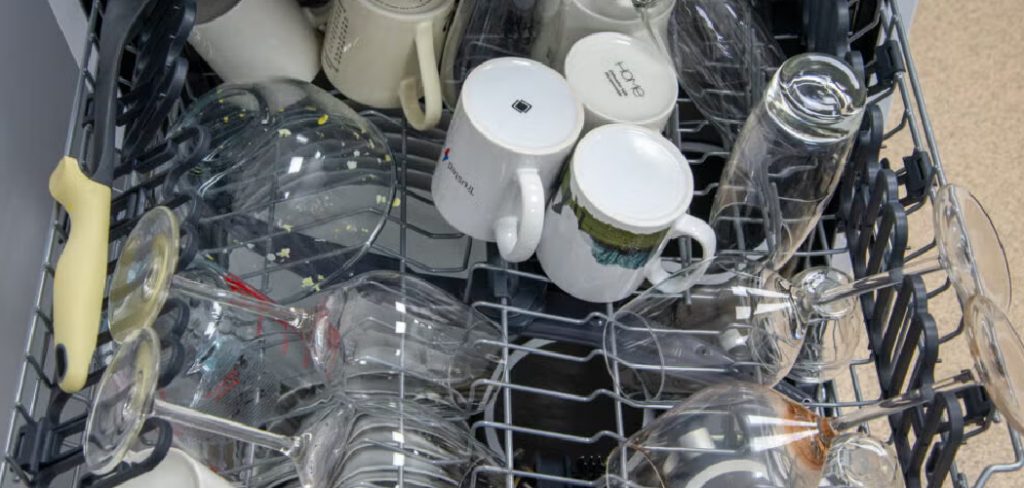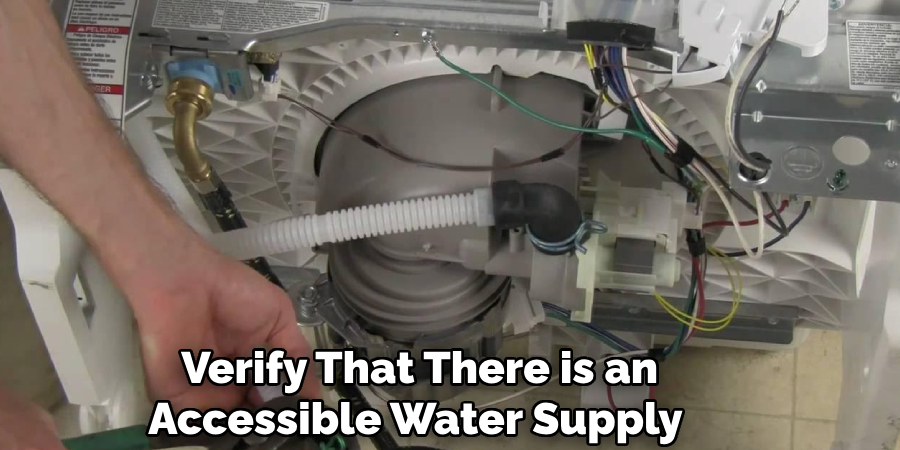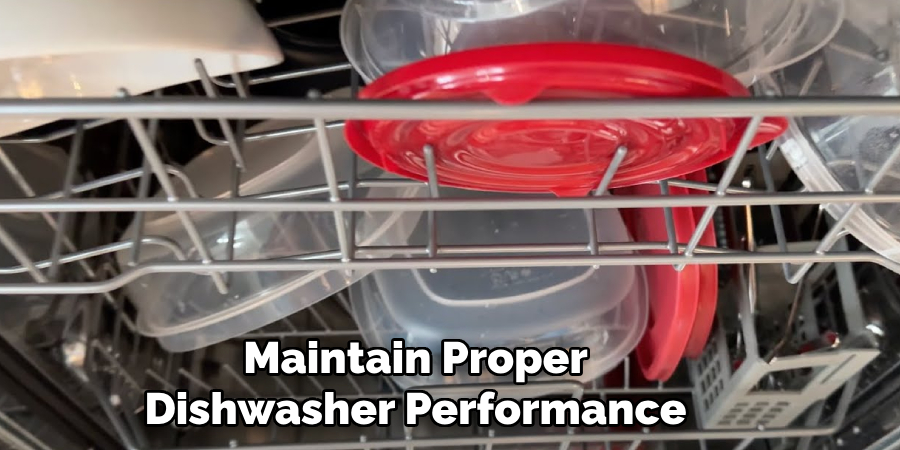Installing a Frigidaire dishwasher can seem like a daunting task, but with the right tools and guidance, it can be a straightforward process.

This guide on how to install frigidaire dishwasher will walk you through each step to ensure proper installation, from preparing the area to securing the final connections. Whether you’re installing a new unit or replacing an old one, this comprehensive guide will help you complete the job efficiently and safely.
Why Choose a Frigidaire Dishwasher?
Frigidaire dishwashers are renowned for their innovative features, reliability, and efficiency, making them a popular choice for households. With advanced cleaning technology, these dishwashers ensure dishes come out sparkling clean every time, even when tackling stubborn food residue. They are designed to be energy-efficient, helping to reduce utility costs while being environmentally friendly.
Additionally, Frigidaire offers a variety of models to suit different needs and kitchen layouts, from compact designs for smaller spaces to high-capacity units for larger families. Durable construction and sleek aesthetics also guarantee longevity and style, making Frigidaire dishwashers a top contender for any home.
Needed Materials
Before beginning the installation process, make sure you have all the necessary materials. Here is a list of tools and equipment you will need to install a Frigidaire dishwasher:
Screwdriver:
You will need a screwdriver to remove the screws securing the dishwasher in place and install the mounting brackets.
Adjustable Wrench:
An adjustable wrench is necessary for tightening connections and ensuring they are secure.
Measuring Tape:
A measuring tape will be needed to ensure proper alignment and spacing of the dishwasher in its designated area.
Teflon Tape:
Teflon tape is used to seal any water connections, preventing leaks.
Dishwasher Installation Kit:
Some Frigidaire dishwasher models come with an installation kit that includes necessary hardware such as screws, clamps, and hose fittings. If your model does not include one, make sure to purchase an installation kit separately.
8 Step-by-step Guidelines on How to Install Frigidaire Dishwasher
Step 1: Prepare the Area
Before starting the installation, ensure the area where the dishwasher will be placed is properly prepared. Remove the old dishwasher if you’re replacing an existing unit, and thoroughly clean the space to eliminate any dust, debris, or residue. Measure the dimensions of the opening to confirm it meets the size requirements for your Frigidaire dishwasher, including height, width, and depth. Verify that there is an accessible water supply line, drain connection, and electrical outlet nearby.

If any of these connections are not present, they will need to be installed prior to moving forward. Proper preparation of the area will help ensure a smooth and trouble-free installation process.
Step 2: Unpack the Dishwasher
Carefully unpack the dishwasher from its packaging and place it on a flat, stable surface. Remove all protective materials, such as plastic wrap, foam inserts, or tape, from both the exterior and interior of the unit. Inspect the dishwasher for any visible signs of damage that may have occurred during shipping.
Make sure to take inventory of the items included, such as mounting brackets, screws, and the user manual. Ensure all components are accounted for before proceeding to the next step. If anything is missing or damaged, contact the manufacturer or retailer immediately for assistance.
Step 3: Prepare the Dishwasher
Before installing the dishwasher, it is essential to prepare it by attaching any necessary parts. Refer to the user manual for specific instructions on how to do this for your model. This step may involve attaching mounting brackets, leveling feet, or other components that will help secure and stabilize the unit during installation.
You may also need to adjust the height of the dishwasher by screwing or unscrewing the adjustable feet to ensure it fits snugly in the designated space. Once all necessary parts are attached and adjustments have been made, the dishwasher is ready to be installed.
Step 4: Connect Water Supply
Start by turning off the main water supply and opening a nearby faucet to relieve any pressure in the water lines before proceeding. Then, connect one end of the water supply line (typically included in the installation kit) to the hot water valve under your sink. Secure with an adjustable wrench and apply Teflon tape around any threaded connections for a watertight seal.

Next, attach the other end of the water supply line to the designated inlet on the dishwasher located at the bottom of the unit. Again, use an adjustable wrench to tighten and ensure there are no leaks.
Step 5: Connect Drain Line
Connect the drain line from your dishwasher to your sink’s drain or garbage disposal. The drain hose should be routed through a high loop (usually provided with the installation kit) to prevent backflow into the dishwasher. Secure with a hose clamp and check for any kinks or blockages in the hose that may impede proper draining.
It is essential to ensure proper drainage to prevent any potential water damage or clogs.
Step 6: Secure the Dishwasher
Once all connections are in place and secure, carefully slide the dishwasher into its designated area. Make sure it is centered and level using a measuring tape and adjustable feet if necessary.
Next, use the mounting brackets provided with your Frigidaire dishwasher or purchase them separately if not included. Follow the user manual’s instructions on how to attach these brackets securely to the surrounding cabinets or countertop. This step will help stabilize the unit during operation.
Step 7: Turn On Power and Water Supply
After completing the connections and securing the dishwasher in place, it is time to turn on the power and water supply. First, restore the main water supply by turning the valve back on and checking for any leaks in the water line connections. Tighten connections further if necessary to stop any leakage.
Next, plug the dishwasher’s power cord into the nearby electrical outlet or switch on the circuit breaker if the dishwasher is hardwired. Once powered, test the dishwasher by running a short cycle to ensure it is functioning correctly. Verify that water enters and drains properly, and listen for any unusual noises that may indicate improper installation. If everything checks out, the dishwasher is now ready for use.
Step 8: Clean Up
The final step of the installation process is to clean up any remaining materials, such as packaging, tools, or debris. Dispose of these items properly and wipe down the exterior of the dishwasher using a damp cloth. Congratulations! You have successfully installed your new Frigidaire dishwasher.

Following these step-by-step guidelines should make the installation process of your Frigidaire dishwasher a breeze. Remember to always refer to the user manual for specific instructions for your model and seek professional help if you encounter any difficulties during the installation process. Enjoy your new dishwasher and its many convenient features that will make dishwashing a more effortless and efficient task. Happy dishwashing!
Maintaining Your Frigidaire Dishwasher
To ensure long-lasting performance and avoid potential issues, regular maintenance of your Frigidaire dishwasher is crucial. Here are some tips for maintaining your unit:
- Clean the interior and exterior regularly with a mild detergent solution or vinegar to remove any buildup or residue.
- Check and clean the filter regularly to prevent clogs that can affect the dishwasher’s performance.
- Inspect and unclog the spray arms if necessary to ensure proper water distribution during wash cycles.
- Keep an eye out for any leaks or unusual noises and address them promptly to avoid potential damage.
By following these simple maintenance tips on how to install frigidaire dishwasher, you can extend the life of your Frigidaire dishwasher and enjoy its efficient performance for years to come.
Frequently Asked Questions
Q: Can I Install a Frigidaire Dishwasher Myself, or Do I Need a Professional?
A: While it is possible to install a Frigidaire dishwasher yourself, we recommend seeking the help of a professional for proper installation and to avoid any potential issues or mistakes.
Q: Can I Use Any Detergent in My Frigidaire Dishwasher?
A: We recommend using only detergents specifically designed for dishwashers to ensure optimal cleaning performance and avoid damaging the unit. Refer to the user manual for a list of recommended detergents for your model.
Q: How Often Should I Clean the Filter in My Frigidaire Dishwasher?
A: It is best to clean the filter at least once every few months, depending on usage. Check the filter regularly and clean it whenever you notice buildup or clogs to maintain proper dishwasher performance.

Conclusion
Installing and maintaining a Frigidaire dishwasher can be a straightforward process if you follow the outlined instructions on how to install frigidaire dishwasher carefully and prioritize routine maintenance. By doing so, you ensure optimal performance, prolong the life of your appliance, and enhance your overall dishwashing experience. Whether you choose to complete the installation yourself or seek professional assistance, your new dishwasher is designed to make kitchen cleanup quicker and more convenient.
With proper care, your Frigidaire dishwasher will remain a reliable and indispensable part of your home for years to come.
Professional Focus
Angela Ervin, a former interior designer turned blogger, specializes in kitchen design and renovations. Through her website, she blends her passion for cooking with design expertise, sharing practical and creative ideas. Known for balancing functionality and beauty, Angela’s insightful content has made her a trusted voice in home design and lifestyle.
About the Author
Angela Ervin, an experienced interior designer and blogger, combines her passion for kitchen renovations with storytelling. Living in Petersburg with her family, she enjoys cooking and testing her projects firsthand. Known for her humor and relatable style, Angela shares creative, functional design insights through her content, making her a trusted voice in home design.
Education History
University: Virginia Commonwealth University
Degree: Bachelor of Fine Arts (BFA) in Interior Design
- Angela’s education at VCU focused on mastering core interior design principles, including spatial planning, color theory, materials selection, and sustainable design practices.
- She gained hands-on experience through studio projects and collaborative design exercises, which honed her ability to create functional and aesthetically pleasing environments.
- Her coursework also emphasized problem-solving and practical applications of design, preparing her for real-world projects like her self-directed kitchen renovations.
- The program’s strong foundation in both technical skills and creative expression shaped Angela’s ability to seamlessly integrate form and function in her work.
